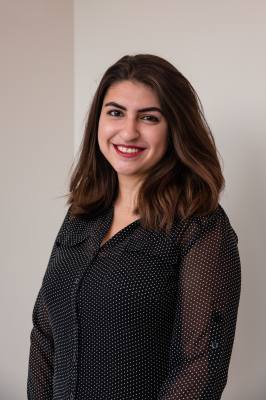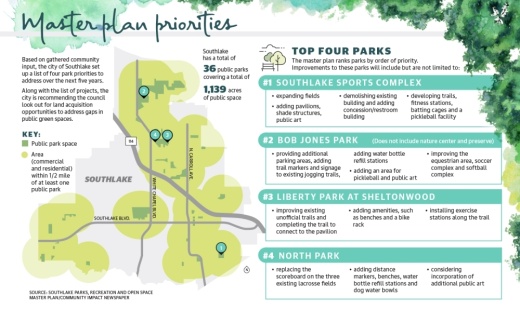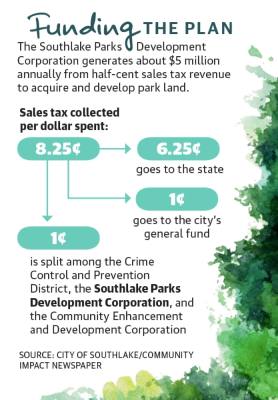Data from The Trust for Public Land, a nonprofit dedicated to creating parks and protecting land for people, shows only 30% of Southlake residents live within a 10-minute walk of a park. The national average is 55%.
To bring more public green spaces and update facilities, a new master plan was adopted on June 15 by City Council with the Southlake Sports Complex listed as the top priority.
“[Having additional courts and fields] will draw [people]. If we manage it correctly, it’ll [have] city utilization, citizen utilization and hopefully be able to host tournaments,” Council Member Randy Robbins said.
Recommendations for park projects were prioritized using community input over two years. Along with the Southlake Sports Complex, the other three top parks to address include Bob Jones Park (minus the Nature Center and Preserve); Liberty Park at Sheltonwood; and North Park.
More green space
The city of Southlake has 36 public parks for a total of 1,139 acres of public space.
The Trust for Public Land estimates only 5% of city land is used for parks and recreation versus a 15% national median.
Chris Tribble, director of parks and recreation, said the city is aware of some gaps when it comes to accessible public spaces. He said the new master plan addresses this need by recommending more land acquisition.
“There are still parcels of land in Southlake that are undeveloped...” Tribble said. “If there are pieces of property that make sense to further develop our park system, then we have the ability to look at that.”
•Mayor Pro Tem Chad Patton said one of the issues the city has faced in pursuit of land acquisition is drainage concerns. He said the city is looking at ways to turn undeveloped land into passive open space.
“It’s a long-term plan that I’m sure we’re going to be talking about in our summer workshop,” he said. “But it’s hard because some of the areas are just kind of landlocked, and we can’t demand land from existing residents or landowners just because we feel like we want more open space.”
Project overview
Over the course of two years, the Parks and Recreation Board collected feedback before creating park packages. Ranked by level of importance, recommendations were then shared with city council.
The $26.7 million Southlake Sports Complex upgrades will redevelop it into a new community park with expanded open fields, baseball fields, concession areas and restrooms, a fully accessible playground, fitness stations, batting cages and a pickleball facility.
“[We wanted to make sure] that we can accommodate as many sports as possible. We’re trying to make our fields more and more flexible,” said Frances Scharli, Parks and Recreation Board chair.
Bob Jones Park will receive interactive public art and add a 5,000-kilometer running loop within the park. Potential for a pickleball court, installation of synthetic turf and improvements to the soccer and softball complex are also on the list.
Upgrades to Liberty Park at Sheltonwood will include added amenities near the trails, and North Park will have its lacrosse fields replaced. It may also have a fourth field added, among other recommendations.
Alongside the major projects, there will also be smaller improvements that don’t require a lot of time and money. Examples include park benches, trail distance markers and trash cans.
“Some of those are kind of low-hanging fruit type recommendations ... that we can do along the way, so we can make that impact at several parks,” Tribble said.
Securing funds
The upgrades are estimated to be completed over several years once adequate funding is secured, which itself will take a while, Tribble said.
Projects mentioned in the amended master plan are primarily funded through the city’s half-cent sales tax. Around $5 million a year is earned for parks from this tax.
For a project such as the Southlake Sports Complex, estimated at almost $27 million, only $10.7 million has been raised for it. The city cannot begin any work on this first priority until another $16 million has been secured.
“Although it is a bit of a slow process, the wonderful thing about it is you concentrate your money and your effort and your time—and you get it right when you do it,” Scharli said.






